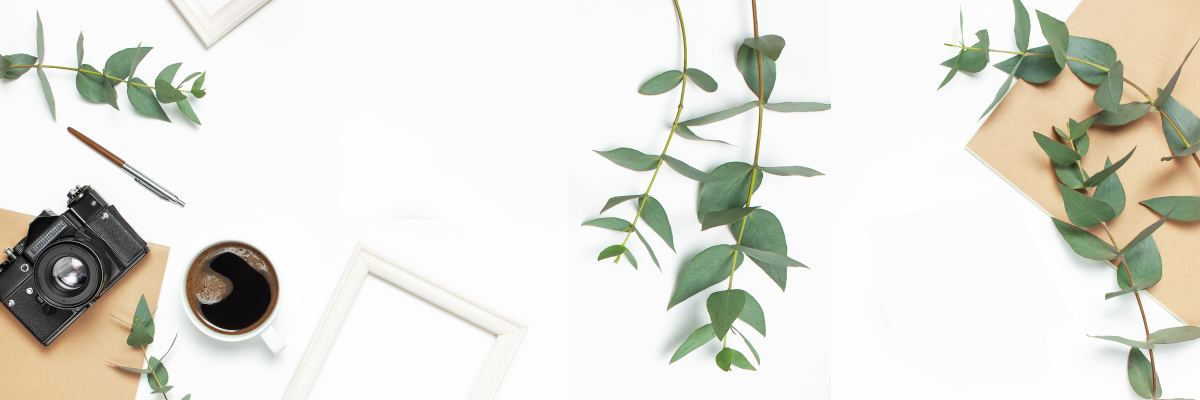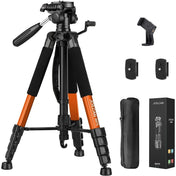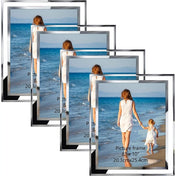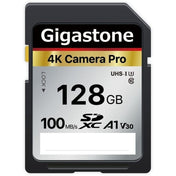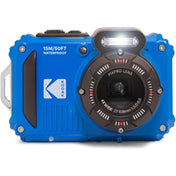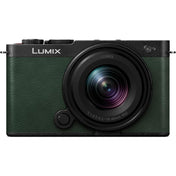As a photographer, you are armed with a powerful tool - your camera. But have you ever considered that the lens you choose can make or break your shot? It's true! The lens selection is a crucial aspect of photography that can greatly impact the final result. So, let's dive into the wonderful world of lenses and explore why choosing the right one is so important.
The Lens: A Window to Your Vision
Imagine you're standing in front of a breathtaking landscape, ready to capture its beauty. You raise your camera to your eye and press the shutter button. But wait, something's not quite right. The image on your camera's LCD screen doesn't do justice to the magnificent scene before you. What went wrong?
The answer lies in your lens selection. Just like a window, the lens allows light to pass through and reach your camera's sensor. Different lenses have different characteristics, which can drastically alter the way your image is captured. From focal length to aperture, each lens component plays a vital role in shaping your vision.
The Magic of Focal Length
One of the key factors in lens selection is the focal length. This measurement determines the field of view and magnification of your image. Whether you're shooting landscapes, portraits, or wildlife, the right focal length can make a world of difference.
Wide-angle lenses, with their shorter focal lengths, are perfect for capturing expansive scenes and emphasizing depth. They allow you to fit more into the frame, making them a favorite among landscape photographers. On the other hand, telephoto lenses, with their longer focal lengths, bring distant subjects closer, making them ideal for wildlife and sports photography. They also create a pleasing compression effect, which can be used creatively in portraits.
So, the next time you're planning a shoot, consider what focal length best matches your desired outcome. It's the first step in turning your vision into reality.
Aperture: The Gateway to Creativity
Now that we've covered focal length, let's talk about aperture - the gateway to creativity. Aperture refers to the size of the opening in the lens that allows light to enter. It not only affects the amount of light reaching your sensor but also determines the depth of field.
Wide apertures, such as f/1.8 or f/2.8, allow more light to enter and create a shallow depth of field. This means that your subject will be in sharp focus, while the background becomes beautifully blurred, drawing attention to the main subject. It's perfect for portraits, where you want to isolate your subject and create a dreamy, bokeh-filled background.
On the other hand, smaller apertures, like f/8 or f/11, allow less light to enter but result in a greater depth of field. This is ideal for landscape photography, where you want everything from the foreground to the background to be in sharp focus.
By playing with different apertures, you can add your own creative touch to each shot, giving it a unique and captivating look.
Choosing the Right Lens for the Job
Now that we've explored the importance of focal length and aperture in lens selection, let's delve into a few specific scenarios where lens choice is critical.
Portrait Photography: The Eyes are the Windows to the Soul
When photographing people, it's essential to choose a lens that flatters your subjects. For traditional headshots and close-ups, a lens with a focal length between 85mm and 135mm is often recommended. These lenses create a natural perspective, resulting in pleasing facial proportions and minimal distortion.
Another factor to consider in portrait photography is aperture. Wide-aperture lenses, like a 50mm f/1.4 or an 85mm f/1.8, are fantastic for capturing stunning bokeh and isolating your subject from the background. The creamy blur adds a touch of magic to your portraits, making them truly captivating.
Landscape Photography: Capturing Nature's Masterpieces
When it comes to landscape photography, wide-angle lenses are your best friends. They allow you to capture the expansive beauty of nature, from vast mountain ranges to breathtaking sunsets.
A popular choice among landscape photographers is a lens with a focal length between 16mm and 35mm. These wide-angle lenses enable you to include more of the scene in your frame, creating a sense of depth and grandeur. Pair them with a small aperture, such as f/11 or f/16, to ensure that everything from the foreground to the background is in sharp focus.
Street Photography: Unveiling the Beauty of Everyday Life
Street photography is all about capturing the essence of everyday life, often in bustling urban environments. In this genre, versatility and discretion are key.
A popular lens choice for street photography is a prime lens with a focal length of 35mm or 50mm. These lenses offer a natural field of view, allowing you to capture scenes as you see them. They are also small and lightweight, making them inconspicuous and perfect for capturing candid moments without drawing attention.
The Final Frame: Making Your Choice
Now that you understand the significance of lens selection in photography, it's time to put your knowledge into practice. Remember, the lens you choose can greatly influence the outcome of your images. So, take a moment to consider your subject, desired perspective, and creative vision before reaching into your camera bag.
Whether you're capturing the depth of a landscape, the soul of a portrait, or the energy of a bustling city street, the lens you choose will play a crucial role in bringing your vision to life.
So, embrace the art of lens selection, experiment with different focal lengths and apertures, and watch as your images transform from ordinary snapshots to extraordinary works of art.
It's time to focus on the lens, and let the world come into view through your unique perspective.

